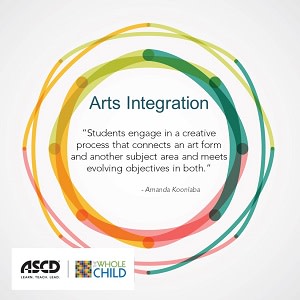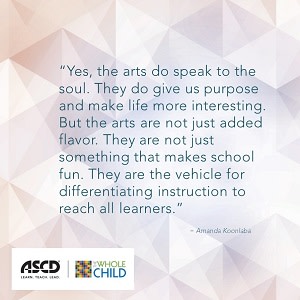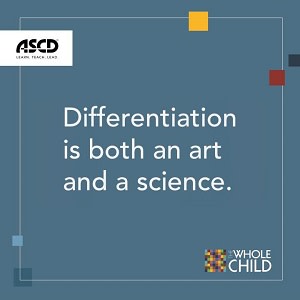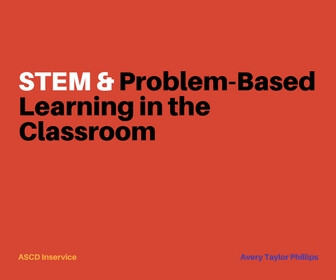I teach kindergarten and 1st grade at a public school in East Harlem, New York. I’ve been teaching for 12 years and, over the last couple of years, have been eager to become more effective at teaching my students how to read.
In the past, many of my students learned to read well, but some struggled to read by the end of 1st grade. I felt concerned about how well I was meeting students’ needs as beginning readers. As a result, I have been integrating more decodable books (decodables) into my overall literacy instruction. Decodable books are carefully controlled texts that contain specific patterns of written representations of phonemes (units of sound) that match the phonics skills students are learning.
My school context and identity inform the way I teach reading and use culturally responsive decodable books. I’m a white, able-bodied, cisgender person teaching in a richly diverse school: Half of my students are Hispanic, as determined by the New York Department of Education, and nearly a third are Black. Approximately 31 percent of my students have disabilities, and 64 percent qualify for free or reduced-price lunch. There are often seven or more languages spoken by the children that I teach, including African American Language.
Over three decades of research by literacy experts like Marilyn Jager Adams, Anne Castles, and Heidi Anne Mesmer, support the use of decodable books in teaching children the complex act of reading. Decodables are most appropriate for beginning readers who are decoding by looking at all the letters in the words and connecting those letters to their sounds, recognizing letters that work together to represent one sound (like “ck” for the /k/ sound in “duck”). Researchers have termed these phases—when children are looking at letters and connecting them to sounds—“partial” and “full” alphabetic phases of word reading.
Many of my students are at this stage of recognizing alphabetic phases in their development as readers. In previous years, I had only used predictable texts when teaching my students to read. Predictable texts, as distinct from decodable texts, are a type of text for beginning readers that have short, repetitive sentences in which certain high-frequency words might repeat, forming a pattern. The words are not controlled for particular letter-sound correspondences. A predictable book about a park might say, for example, “Look at the tree” and “Look at the flower.”
I use decodable texts in my instruction as part of a comprehensive, culturally responsive literacy curriculum.
Now, however, in addition to predictable texts, I use decodable texts in my instruction as part of a comprehensive, culturally responsive literacy curriculum. These books have provided children in my classroom with valuable and relevant practice with letter-sound connections and blending based on their daily phonics instruction.
Getting the Most Out of Decodables
This past year, I sought the expertise of four literacy teacher-educators to help me understand more about ways to use decodable texts with beginning readers as part of a comprehensive, culturally responsive literacy curriculum. I have known one teacher-educator, Kindel Nash, for seven years as we have collaborated to understand promising and culturally sustaining early literacy practices in my classroom. She introduced me to the other three literacy teacher-educators in the summer of 2022.
Since then, the five of us have met several times as a group to discuss the research on culture, phonics, and decodables. I wanted to make sure I was using these books with children in the most impactful way possible. These educators helped me develop the following five tips (based on our research and teaching experiences) for using decodable books with readers who have partial-to-full alphabetic knowledge:
- Before decodables, help students learn the conventions of printed texts and develop both phonological awareness and oral language. Interactive writing during morning meetings, talking with students during playtime and writing time, and interactive read-aloud activities help my students develop oral language and phonological awareness. I also build phonological awareness by guiding students through breaking words into their sounds so that those sounds can be mapped to letters. I use predictable texts, one type of less-controlled text for beginning readers, to develop students’ concepts of print. When I use predictable books for instruction, the goal is not for children to decode the words in the books but to learn essential skills, such as that print carries meaning and reading goes from left to right. These steps help develop students’ concept of word and are all important prerequisites to help students decode other texts later.
- Use decodables with the appropriate readers. Decodable books are best for beginning readers who have partial-to-full alphabetic and sound system knowledge, like most of my students. Specifically, decodables support children who are decoding by a) looking at all the letters in the words and connecting those letters to their sounds, b) recognizing letters that work together to represent one sound (like “ee” for the “long e” sound in “beep”), or c) understanding common prefixes and suffixes (like “-ing” at the end of “testing”). Decodables do not support children who are developing oral language, alphabetic knowledge, phonological awareness, and learning concepts of print. Decodables also do not benefit my students for whom reading is easy. Once students can recognize and read words automatically, I transition them to less-controlled trade books that build their fluency and facilitate critical thinking about texts.
- Read decodable books daily as one part of the overall literacy curriculum. In my class, children read decodable books for 10-15 minutes a day. They also read multi-genre picture books of their choice for 15-20 additional minutes each day, on their own or with a partner. Students experience many other literacy engagement opportunities daily, including whole-group read-aloud activities, systematic phonics, and high-frequency word instruction, sentence dictation, guided writing time, shared reading, and interactive writing. While phonics development is essential, significant time must be devoted to developing all aspects of the reading process.
- Ensure students can relate and contextualize the phonics instruction that accompanies decodable texts to their own lives. Reading processes like decoding are mediated by a child’s cultural and linguistic ways of being and knowing. For example, some of my students may be members of cultural groups that engage in holistic, top-down processing rather than linear, bottom-up processing needed within the methods typically used to teach systematic phonics. This means that I have to spend time connecting phonics skills to students’ life experiences. I do this by continually comparing English speech sounds to the sounds in students’ heritage languages and language varieties, including African American Language. For example, some children whose first language is Spanish may pronounce English words with /th/, such as “the” and “this” with a /d/ sound or other sounds because /th/ is not present in Spanish. In turn, these children might spell “this” as “dis” or need additional support with reading words with /th/ in English. I might provide instruction on the /th/ sound but also encourage them to pronounce these words with the sound that matches how they say the word when they talk because I want books to make sense to them. I also contextualize the skills that students are learning within other literacy activities they are engaged in. In order to contextualize instruction in this way, I spend a great deal of time getting to know children and their families.
Engaging children in high-quality, relevant, non-stereotypical, and culturally authentic decodable books is important because, for children, reading such books can be self-affirming.

- Select high-quality and culturally authentic decodable texts that relate to the contexts of students’ lives. Engaging children in high-quality, relevant, non-stereotypical, and culturally authentic decodable books that relate to their lives is important to me because, for children, reading such books can be self-affirming. When children read culturally relevant books, they also may have more background knowledge about the content and, as a result, understand the stories well. As with any book I purchase, I carefully review the decodable books for cultural sensitivity and withhold any that reinforce racial or gender stereotypes. I have found the Guide for Selecting Anti-Bias Children’s Books and Lee & Low Books’ Classroom Library Questionnaire helpful in selecting and evaluating decodable books. Based on these guidelines, I have found publishers like Daffodil Hill Press, High Noon Books (particularly their Little Sprouts series), Flyleaf Publishing, and Whole Phonics to publish books that foreground non-stereotypical, culturally authentic characters and storylines.
Looking Ahead
Since I have engaged my students with decodables, they have ended the year with improved skills in letter and sound knowledge and blending. In past years, many students finished the school year with minimal letter-sound knowledge and blending skills. But in a 2022 informal assessment, 15 of my 17 kindergarteners knew all or most letters and sounds and could blend and segment CVC words. Also, on the standardized assessment used by my school, 70 percent of students met or were slightly under the benchmark, whereas in the past, only 36 percent of students achieved the benchmark.
I look forward to continuing to use decodable books—in addition to predictable books and other texts—in my instruction. My goal is to pay close attention to each child, note where they are on their reading journey, and match them with the books that can help them develop the skills they are ready to learn. I encourage teachers to consider using decodable books as part of a comprehensive, culturally responsive literacy program that nurtures children’s development as readers and thinkers.
Editor's note: Kindel Turner Nash, Rebecca Payne Jordan, Ashley Pennell, and Woodrow Trathen contributed to this article.








